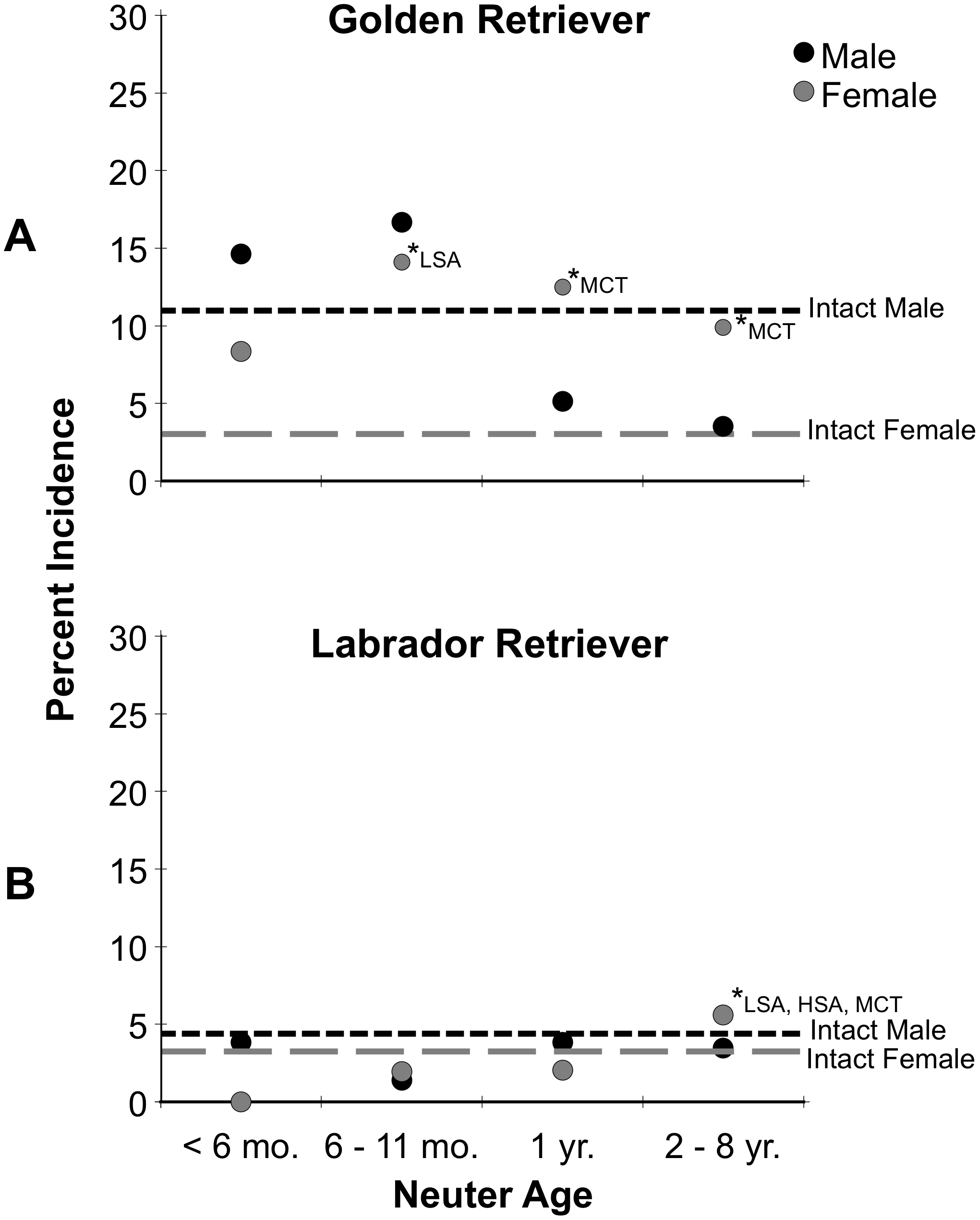Are you wondering when to spay your golden retriever? Well, you’ve come to the right place! It’s a common and important question for dog owners, and we’re here to shed some light on the matter.
Spaying a golden retriever at the right time can provide numerous benefits for both your furry friend and your peace of mind. But how do you determine the ideal age for this procedure? Don’t worry; we’ve got you covered!
In this article, we’ll delve into the factors you should consider when deciding when to spay your golden retriever. By the end, you’ll be equipped with valuable insights to make an informed decision that ensures the overall well-being of your beloved pet. Let’s get started!

When to Spay a Golden Retriever: A Guide for Responsible Pet Owners
Golden Retrievers are one of the most beloved and popular dog breeds in the world. As responsible pet owners, it is crucial to educate ourselves about their care, including when to spay our female Golden Retrievers. Spaying is a major decision that can have long-term effects on your dog’s health and wellbeing. In this article, we will explore the optimal time to spay a Golden Retriever, the benefits of spaying, and important considerations for the procedure.
1. Age Considerations for Spaying a Golden Retriever
The optimal age to spay a Golden Retriever is a topic of much debate among veterinarians. Traditionally, the procedure has been performed around six months of age before the first heat cycle. However, recent research suggests that waiting until after the first heat or even one to two years of age may have health benefits. Waiting until the skeletal system is fully developed reduces the risk of certain orthopedic conditions, such as hip dysplasia. Consult with your veterinarian to determine the best age for spaying your Golden Retriever based on their individual needs and health status.
1.1 Early Spay-Neuter Programs
Some organizations and veterinary clinics advocate for early spay-neuter programs, which involve performing the procedure as early as six to eight weeks of age. These programs aim to prevent overpopulation and reduce the risk of unwanted pregnancies. While early spaying can be beneficial from a population control standpoint, it is important to weigh the potential health risks associated with early spaying, such as an increased risk of certain cancers and orthopedic problems.
2. Health Benefits of Spaying a Golden Retriever
Spaying a female Golden Retriever offers numerous health benefits. One of the most significant advantages is the prevention of pyometra, a potentially life-threatening infection of the uterus. Pyometra typically occurs in older, unspayed females and requires emergency medical intervention. By spaying your Golden Retriever, you eliminate the risk of this serious condition. Spaying also eliminates the possibility of uterine and ovarian cancers, as well as greatly reduces the risk of mammary gland tumors. Early spaying, before the first heat cycle, provides the most significant preventive benefits.
2.1 Behavioral Benefits of Spaying
Aside from the health benefits, spaying a female Golden Retriever can have positive effects on behavior. Unspayed females can go into heat, during which they may exhibit undesirable behaviors such as restlessness, increased vocalization, and attraction of male dogs. Spaying eliminates heat cycles and reduces or eliminates these behavioral issues. Additionally, spayed females are less likely to roam in search of a mate, reducing the risk of accidents and separation anxiety.
3. Important Considerations for Spaying a Golden Retriever
Before proceeding with spaying your Golden Retriever, it is essential to consider certain factors. Firstly, you should evaluate your dog’s overall health and discuss any existing medical conditions with your veterinarian. If there are concerns, your vet may recommend performing additional diagnostic tests or waiting until any health issues are resolved. Secondly, consider your future plans for breeding. If you have intentions of breeding your Golden Retriever, spaying is not recommended. Finally, spaying is a surgical procedure that requires proper post-operative care, including restricting physical activity and monitoring the incision site for any signs of infection or complications.
Additional Considerations
Now that we have explored the optimal age to spay a Golden Retriever, the benefits of spaying, and important considerations, let’s dive into some additional considerations related to this topic.
4. Recovery Period After Spaying a Golden Retriever
After the spaying procedure, it is crucial to provide a safe and comfortable recovery environment for your Golden Retriever. Typically, dogs are discharged from the veterinary clinic with post-operative instructions, including wound care, medication administration, and activity restrictions. It is important to follow these instructions carefully to ensure proper healing and minimize the risk of complications. The recovery period usually lasts around 10 to 14 days, during which time your dog should be kept calm, avoid jumping or strenuous activity, and wear an Elizabethan collar to prevent licking or biting the incision site.
5. Alternatives to Spaying
While spaying is the most common method of preventing unwanted pregnancies and health issues in female dogs, it is not the only option. Another alternative is hormone injections, commonly known as “chemical castration.” These injections temporarily suppress the production of reproductive hormones and can be an effective contraceptive method, but they are not as foolproof as spaying. It is important to discuss the pros and cons of different options with your veterinarian to make an informed decision that best suits your Golden Retriever’s individual needs.
6. Long-Term Effects of Spaying
Spaying a Golden Retriever is a lifelong commitment. It is essential to understand that the procedure is irreversible, and it will impact your dog’s hormonal balance and reproductive system for the rest of her life. Some long-term effects of spaying include a decreased risk of certain cancers, elimination of heat cycles and associated behavioral changes, and the prevention of potential reproductive issues. However, it is crucial to closely monitor your spayed Golden Retriever’s weight and adjust her diet and exercise regimen accordingly, as spaying can increase the risk of obesity and related health problems.
In conclusion, the decision of when to spay a Golden Retriever should be based on careful consideration of factors such as age, health status, and individual needs. Spaying offers numerous health benefits and can prevent serious conditions such as pyometra and certain cancers. However, it is important to weigh the potential risks and long-term effects of the procedure. Consultation with a trusted veterinarian is crucial in making an informed decision that ensures your Golden Retriever’s overall health and wellbeing.
Key Takeaways: When to Spay a Golden Retriever?
- Golden Retrievers can be spayed at around 6-9 months of age.
- It is advisable to wait until the dog has fully developed physically and mentally before spaying.
- Consult with your veterinarian to determine the optimal timing for spaying based on your dog’s health and individual needs.
- Spaying before the first heat cycle can help prevent certain health issues and reduce the risk of mammary tumors.
- Spaying later in life can increase the risk of certain health complications, such as pyometra.
Frequently Asked Questions
Welcome to our FAQ section where we address common questions about when to spay a golden retriever. Below, you’ll find everything you need to know about the ideal timing for this important procedure.
1. What is the best age to spay a female golden retriever?
The ideal age to spay a female golden retriever is between 6 to 9 months old. Waiting until she reaches sexual maturity is important to allow for proper growth and development before undergoing the spay surgery. However, it’s essential to consult with your veterinarian to determine the best timing for your individual dog based on her health and breed-specific considerations.
Spaying your golden retriever before her first heat cycle can significantly reduce the risk of certain reproductive health issues, such as mammary tumors or uterine infections. Early spaying also eliminates the possibility of unwanted pregnancies.
2. Can I spay my male golden retriever?
Yes, you can spay your male golden retriever, although the procedure is known as neutering for males. The recommended age for neutering a male golden retriever is usually between 6 to 9 months old. However, it’s important to consult with your veterinarian regarding the best timing for your specific dog based on his health and individual needs.
Neutering your male golden retriever offers numerous benefits, including the prevention of certain reproductive health issues like testicular tumors and prostate problems. It can also help reduce undesirable behaviors such as aggression and roaming, making your dog more manageable and easier to train.
3. Are there any risks associated with spaying or neutering a golden retriever?
Like any surgical procedure, there are potential risks associated with spaying or neutering a golden retriever. However, complications are rare when performed by a qualified veterinarian. Some possible risks include infections, bleeding, adverse reactions to anesthesia, or complications during the recovery period.
To minimize these risks, it’s crucial to choose a reputable veterinarian who has experience and a good track record in performing spay or neuter surgeries. Your vet will also provide detailed aftercare instructions to ensure a smooth and safe recovery for your golden retriever.
4. Can I spay my golden retriever after her first heat cycle?
Yes, it is possible to spay a golden retriever after her first heat cycle. However, it is generally recommended to wait until after the heat cycle is over before scheduling the spay surgery. This waiting period allows the hormonal changes to stabilize, reducing the risk of complications during the procedure.
Keep in mind that female golden retrievers can have their first heat cycle between 6 to 24 months of age, with the average being around 9 to 12 months. It’s crucial to discuss the best timing for spaying with your veterinarian, taking into consideration your dog’s overall health and individual circumstances.
5. Will spaying or neutering affect my golden retriever’s behavior?
Spaying or neutering your golden retriever can have a positive impact on their behavior. For females, spaying can help prevent behaviors associated with heat cycles, such as restlessness, vocalization, or attracting unwanted male attention. Neutering males can help reduce aggression, roaming tendencies, and the desire to mark territory.
While spaying or neutering can help modify certain behaviors, it is important to note that it may not entirely eliminate all behavioral issues. Each dog is unique, and their behavior is influenced by a combination of genetics, training, and individual temperament. If you have specific concerns about your golden retriever’s behavior, it’s always a good idea to consult with a professional dog trainer or an animal behaviorist for guidance.

Summary
If you have a golden retriever, it’s best to wait until they are at least one year old before spaying them. This allows their bones and joints to develop properly. Spaying too early can increase the risk of certain health problems, like hip dysplasia and certain cancers. Speak to your veterinarian for the best advice for your furry friend.
It’s important to keep your golden retriever’s health in mind when deciding when to spay. Remember to wait until they’re at least one year old, as this gives them the best chance for a healthy life. Talk to your vet to make sure you make the right choice for your furry family member.
